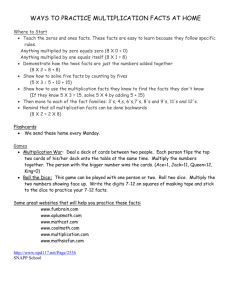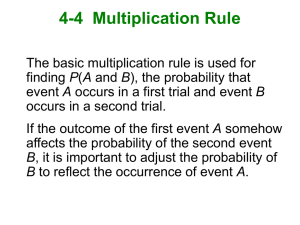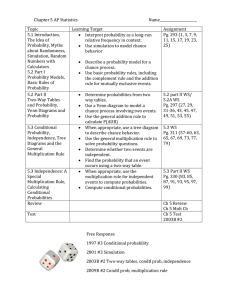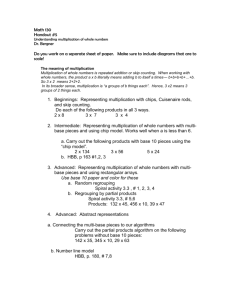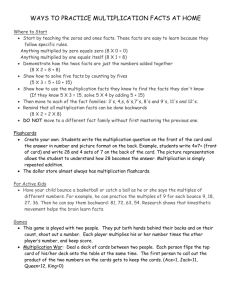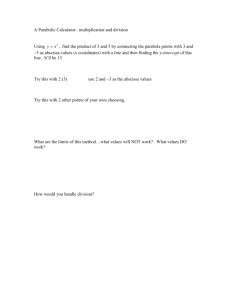General Probability Rules: Extended Multiplication & Independence
advertisement
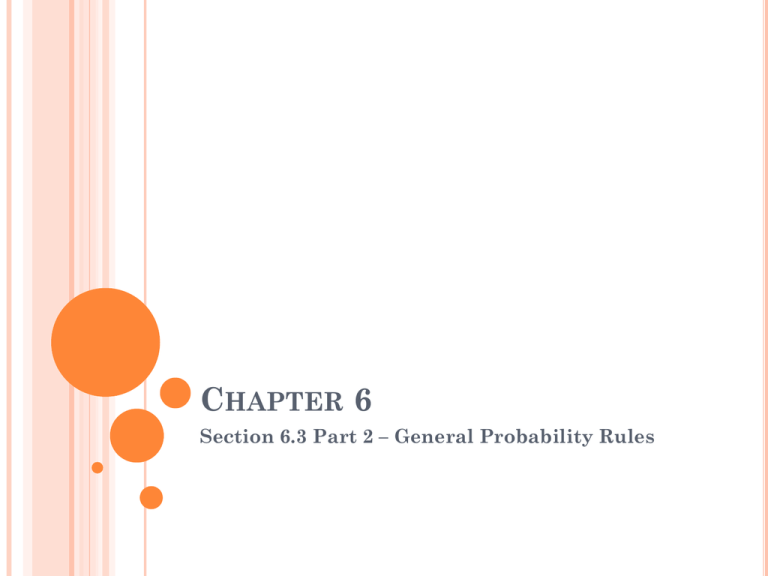
CHAPTER 6 Section 6.3 Part 2 – General Probability Rules EXTENDED MULTIPLICATION RULES Recall that the union of a collection of events is the event that any of them occur. The intersection of any collection of events is the event that all of the events occur. To extend the multiplication rule to the probability that all of several events occur, the key is to condition each event on the occurrence of all of the preceding events. 𝑃 𝐴 and 𝐵 and 𝐶 = 𝑃 𝐴 × 𝑃 𝐵 𝐴 × 𝑃 𝐶 𝐴 and 𝐵 See example 6.22 on p.372 TREE DIAGRAMS REVISITED Probability problems often require us to combine several of the basic rules into a more elaborate calculation. Each segment in the tree is one stage of the problem. Each branch shows a path that must be taken to achieve the next branch. The probability written on each segment is the conditional probability that that segment is given after reaching that point from each branch. EXAMPLE 6.23 See example 6.23 on p.373 TREE DIAGRAMS CONT. The tree diagrams combine the addition and multiplication rules: The multiplication rule says that the probability of reaching the end of any complete branch is the product of the probabilities written on its segments. The probability of any outcome is then found by adding the probabilities of all branches that are part of that event. INDEPENDENCE The conditional probability 𝑃 𝐵 𝐴 is generally not equal to the unconditional probability P(B). That is because the occurrence of event A generally gives us some additional information about whether or not event B occurs. If knowing that A occurs gives no additional information about B, then A and B are independent events. INDEPENDENT EVENTS The formal definition states: Two events A and B that both have positive probability are independent if: 𝑃 𝐵 𝐴 = P(B) We now see that the multiplication rule for independent events 𝑃 𝐴 and 𝐵 = 𝑃 𝐴 × 𝑃(𝐵), is a special case of the general multiplication rule, 𝑃 𝐴 and 𝐵 = 𝑃 𝐴 × 𝑃(𝐵 𝐴) EXAMPLE 6.25 See example 6.25 on p.376 Homework: p.378-381 #’s 63, 64, 68, 70-73, 75, & 77




